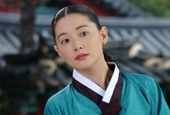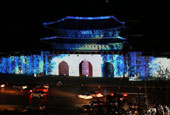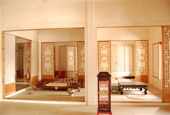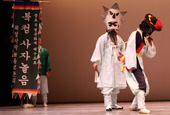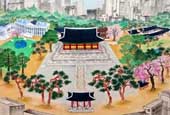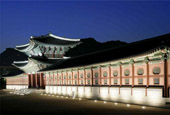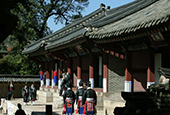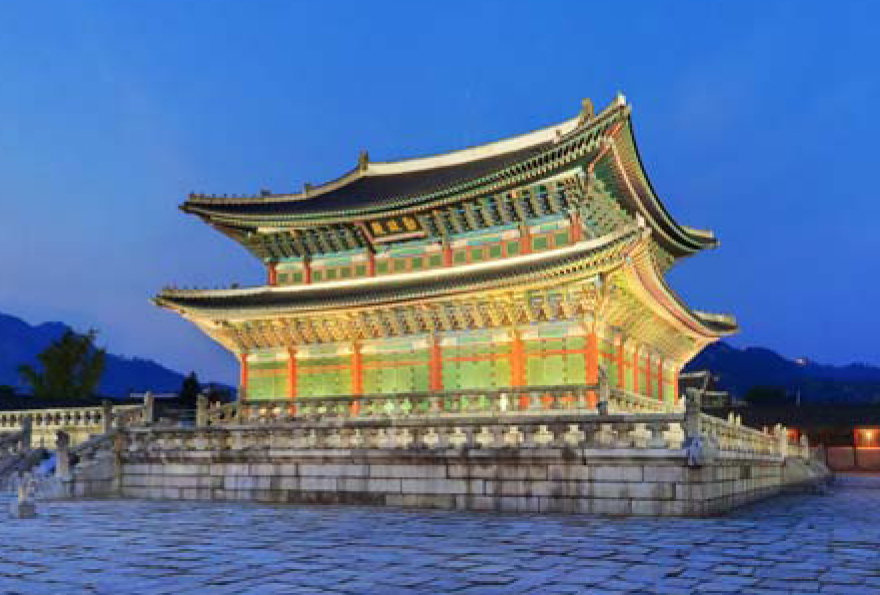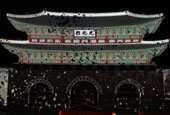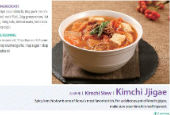Recipes for over 70 royal court dishes featured in the popular soap opera "Jewel in the Palace" are now available in an English cookbook.
The cookbook, "Jewels of the Palace," contains simple culinary instructions explained by Han Bok-ryeo, president of the Institute of Korean Royal Cuisine. It also lists the soap opera's episodes and has a detailed explanation about the traditions behind the royal cuisine of Joseon times (1392-1910).
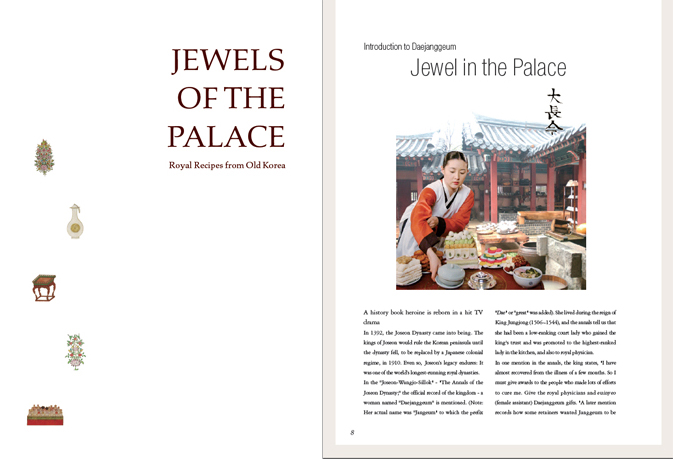
The cookbook consists of four chapters. In the first chapter, "Who Makes Royal Cuisines," the author talks about the court ladies and female medical assistants who worked at the palace, the role played by the main character, Janggeum, in the soap opera. Chapter one also introduces the administrative office that oversaw ingredients and cooking at the palace, and those who managed the large ceramic jars that contained sauces and condiments.
The first chapter also has a recipe for milk porridge (tarakjuk), seasoned bamboo shoots with soft persimmon (hongsi juksunchae), grilled sliced pork (maekjeok) and leaf-wrapped rice set menu (sangchussamcharim), among other dishes.
The second chapter, "How to Serve Royal Cuisine," explains some Joseon history and the philosophy behind the royal dishes. It also introduces recipes for royal hot pot (yeolgujatang), tri-colored glutinous rice cakes (samsaek-danja) and beef and vegetable skewers (hwayangjeok).
Chapter three, "What is the Meaning of Royal Cuisine," explains the practice of sikchi. During Joseon times, it was believed that eating well was important for the prevention of illness and, moreover, that food could cure illnesses. This belief was called sikchi. There is a concept of five colors and five tastes (osaek-omi) which many people believed could fine-tune one's physical balance.
The chapter also introduces dishes made of fresh vegetables and herbs. In the soap opera, the dishes were served to a Chinese envoy who was suffering from diabetes. It also explains sweet dessert pressed cookies (dasik) and deep-fried honey (yakgwa).
The final chapter, "How was Royal Cuisine Passed Down," explains how male cooks in the royal kitchens ended up working at restaurants after Korea formally became a colony in 1910. These cooks served gujeolpan, a platter of nine delicacies, at their restaurants. Eight sliced assorted vegetables are wrapped in thin, small wheat crepes. This is how royal court cuisine became popular among the public.
The cookbook also introduces three colored appetizers (samsaekseon) made of bean curd, cucumbers and fish fillet decorated with five-colored garnishes. According to history, King Gojong (r. 1863-1907) enjoyed eating noodles in a cold soup (naengmyeon) and the recipe for his noodles is also outlined in the book.
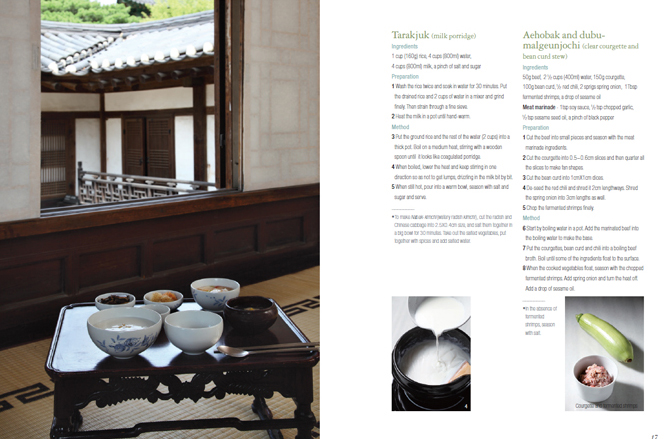
The cookbook "Jewels of the Palace" can be downloaded from the Korean Food Foundation (www.koreanfood.net) or from the Korean food archive site (http://archive.hansik.org).
PDF File Download : Jewels of the Palace
By Limb Jae-un
Korea.net Staff Writer
Photos courtesy of the Ministry of Agriculture, Food and Rural Affairs
jun2@korea.kr
The cookbook, "Jewels of the Palace," contains simple culinary instructions explained by Han Bok-ryeo, president of the Institute of Korean Royal Cuisine. It also lists the soap opera's episodes and has a detailed explanation about the traditions behind the royal cuisine of Joseon times (1392-1910).

The cookbook 'Jewels of the Palace' contains recipes from the royal court that were featured in the TV drama 'Jewel in the Palace' and has a brief explanation of each episode.
The cookbook consists of four chapters. In the first chapter, "Who Makes Royal Cuisines," the author talks about the court ladies and female medical assistants who worked at the palace, the role played by the main character, Janggeum, in the soap opera. Chapter one also introduces the administrative office that oversaw ingredients and cooking at the palace, and those who managed the large ceramic jars that contained sauces and condiments.
The first chapter also has a recipe for milk porridge (tarakjuk), seasoned bamboo shoots with soft persimmon (hongsi juksunchae), grilled sliced pork (maekjeok) and leaf-wrapped rice set menu (sangchussamcharim), among other dishes.
The second chapter, "How to Serve Royal Cuisine," explains some Joseon history and the philosophy behind the royal dishes. It also introduces recipes for royal hot pot (yeolgujatang), tri-colored glutinous rice cakes (samsaek-danja) and beef and vegetable skewers (hwayangjeok).
Chapter three, "What is the Meaning of Royal Cuisine," explains the practice of sikchi. During Joseon times, it was believed that eating well was important for the prevention of illness and, moreover, that food could cure illnesses. This belief was called sikchi. There is a concept of five colors and five tastes (osaek-omi) which many people believed could fine-tune one's physical balance.
The chapter also introduces dishes made of fresh vegetables and herbs. In the soap opera, the dishes were served to a Chinese envoy who was suffering from diabetes. It also explains sweet dessert pressed cookies (dasik) and deep-fried honey (yakgwa).
The final chapter, "How was Royal Cuisine Passed Down," explains how male cooks in the royal kitchens ended up working at restaurants after Korea formally became a colony in 1910. These cooks served gujeolpan, a platter of nine delicacies, at their restaurants. Eight sliced assorted vegetables are wrapped in thin, small wheat crepes. This is how royal court cuisine became popular among the public.
The cookbook also introduces three colored appetizers (samsaekseon) made of bean curd, cucumbers and fish fillet decorated with five-colored garnishes. According to history, King Gojong (r. 1863-1907) enjoyed eating noodles in a cold soup (naengmyeon) and the recipe for his noodles is also outlined in the book.

Milk porridge (tarakjuk) and its recipe are introduced in the cookbook 'Jewels of the Palace.'
The cookbook "Jewels of the Palace" can be downloaded from the Korean Food Foundation (www.koreanfood.net) or from the Korean food archive site (http://archive.hansik.org).
PDF File Download : Jewels of the Palace
By Limb Jae-un
Korea.net Staff Writer
Photos courtesy of the Ministry of Agriculture, Food and Rural Affairs
jun2@korea.kr
